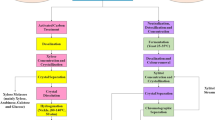Abstract
Candida tropicalis DSM 7524 was used to produce xylitol from d-xylose. The fermentation conditions were optimized during continuous cultivation. The strain employed showed no great dependence upon temperature in a range between 30° C and 37° C. It achieved its best yield of xylitol from d-xylose at a pH value of 2.5. Such low pH values allow non sterile cultivation, which is a major economic factor. With an oxygen uptake rate of 0.8–1 ml oxygen per litre culture medium, the C. tropicalis produce xylitol at a yield of between 77% and 80% of the theoretical value. Higher yeast extract concentrations prevent the conversion of d-xylose into xylitol. d-xylose acts as a growth inhibitor in higher concentrations. The maximum xylitol yield was reached at a d-xylose concentration of around 100 g/l. In a non sterile batch culture with substrate shift 220 g/l xylitol were produced from 300 g/l d-xylose at a xylitol productivity rate of 0.37 g/(lh). In order to increase the specific yield, C. tropicalis was immobilised on porous glass and cultivated in a fluidized bed reactor. In a continuous non sterile cultivation with immobilised cells 155 g/l d-xylose produced 90–95% g/l xylitol with a productivity of 1.35 g/(lh).
Similar content being viewed by others

References
Hyvönen, L.; Koivistoinen, P.: Food technological evaluation of xylitol. Adv. Food Res. 28 (1983) 373–403
Slininger, P. J.; Bolen, P. L.; Kurtzman, C. P.: Pachysolen tannophilus: Properties and process considerations for ethanol production from d-xylose. Enzyme Microb. Technol. 9(1) (1987) 5
Burgi, R.: Este bagaço não é de jogar fora. A granja 44 (484) (1988) 16–26
Havenaar, R.; Huis In T.; Veld, J. H. J.; Stoppelaar, J. D.; Backer Dir Ks, O.: Anti-cariogenic and remineralizing properties of xylitol in combination with sucrose in rats inoculated with Streptococcus mutans. Caries Res. 18 (1984) 269–277
Wåler, S. M.; Assev, S.; Rölla, G.: Xylitol 5-P formation by dental plaque after 12 weeks' exposure to a xylitol/sorbitol containing chewing gum. Scand. J. Dent. Res. 100 (1992) 319–321
Van Eys, J.; Wang, Y. M.; Chan, S.; Tanphaichitr, V. S.; King, S. M.: Xylitol as a therapeutic agent on glucose-6-phosphate dehydrogenase deficiency in: H. L. Sipple; K. W. McNutt (Eds.) Sugars in nutrition, p. 613. New York: Academic Press 1974
Melaja, A.; Hämälainen, L.: 1977 Process for making xylitol. US patent 373–403
Dahiya, J. S.: Xylitol production by Petromyces albertensis grown on medium containing d-xylose. Can. J. Microbiol. 37 (1991) 14–18
Vongsuvanlert, V.; Tani, Y.: Xylitol production by a methanol yeast, Candida boidinii (Kloeckera sp.) No. 2201. J. Ferment. Technol. 1 (1989) 35–39
Prior, B. A.; Kilian, S. G.; Du Preez, J. C.: Fermentation of d-xylose by the yeasts Candida shehatae and Pichia stipitis, prospects and prblems. Process Biochem. 2 (1989) 21–32
Barbosa, M. F. S.; De Medeiros, M. B.; De Mancilha, I. M.; Schneider, H.; Lee, H.: Screening of yeasts for production of xylitol from d-xylose and some factors which affect xylitol yield in Candida guilliermondii. J. Indust. Microbiol. 3 (1988) 241–251
Furlan, S. A.; Dupuy, M. L.; Strehaiano, P.: Bioconversion of d-xylose: Aeration and Kinetics. International conference of biotechnology and food, February, 1989, 20–24, Stuttgart, Germany
Rizzi, M.; Klein, C.; Schulze, C.; Bui-Thanh, N.-A.; Dellweg, H.: Xylose fermentation by yeasts 5. Use of ATP balances for modeling oxygenlimited growth and fermentation of yeast Pichia stiptis with xylose as carbon source. Biotech. Bioeng. 34 (1989) 509–514
Horitsu, H.; Yahashi, Y.; Takamizawa, K.; Kawai, K.; Suzuki, T.; Watanabe, N.: Production of xylitol from d-xylose by Candida tropicalis: optimization of production rate. Biotechnol. Bioeng. 40 (1992) 1085–1091
Pirt, J. S.: Principles of microbe and cell cultivation, p. 65. New York: Blackwell Scientific Publications 1975
Roseiro, J. C.; Peito, A.; Girio, F. M.; Amaral-Collaço, M. T.: The effects of the oxygen transfer coefficient and substrate concentration on the xylose fermentation by Debaryomyces hansenii. Arch. Microbiol. 156 (1991) 484–490
Bruinenberg, P. M.; De Bot, P. H. M.; Van Dijken, J. P.; Scheffers, W. A.: NADH-linked aldose reductase: the key to anaerobic alcohol fermentation of xylose by yeast. Appl. Microbiol. Biotechnol. 19 (1984) 256–260
Author information
Authors and Affiliations
Additional information
Dedicated to the 65th birthday of Prof. Dr. Fritz Wagner.
Mr. S. S. da Silva was a visiting scientist to the GBF. He was supported by a scholarship from the National Council of Scientific and Technological Development, Brasilia, Brazil (CNPq).
We also would like to gratefully acknowledge the support of Prof. Dr. Michele Vitolo of the University of Sao Paulo, and the Centre for Biotechnology and Chemistry, Lorena, S. P. Brazil, in particular the Department of Fermentative Process.
We are grateful to Prof. Rainer Jonas, head of the International Cooperation between Germany/Brazil for the helpful discussions and Dr. Heinrich Lönsdorf (GBF) for the Scanning electron micrographs.
Rights and permissions
About this article
Cite this article
da Silva, S.S., Afschar, A.S. Microbial production of xylitol from D-xylose using Candida tropicalis. Bioprocess Engineering 11, 129–134 (1994). https://doi.org/10.1007/BF00518734
Received:
Issue Date:
DOI: https://doi.org/10.1007/BF00518734



